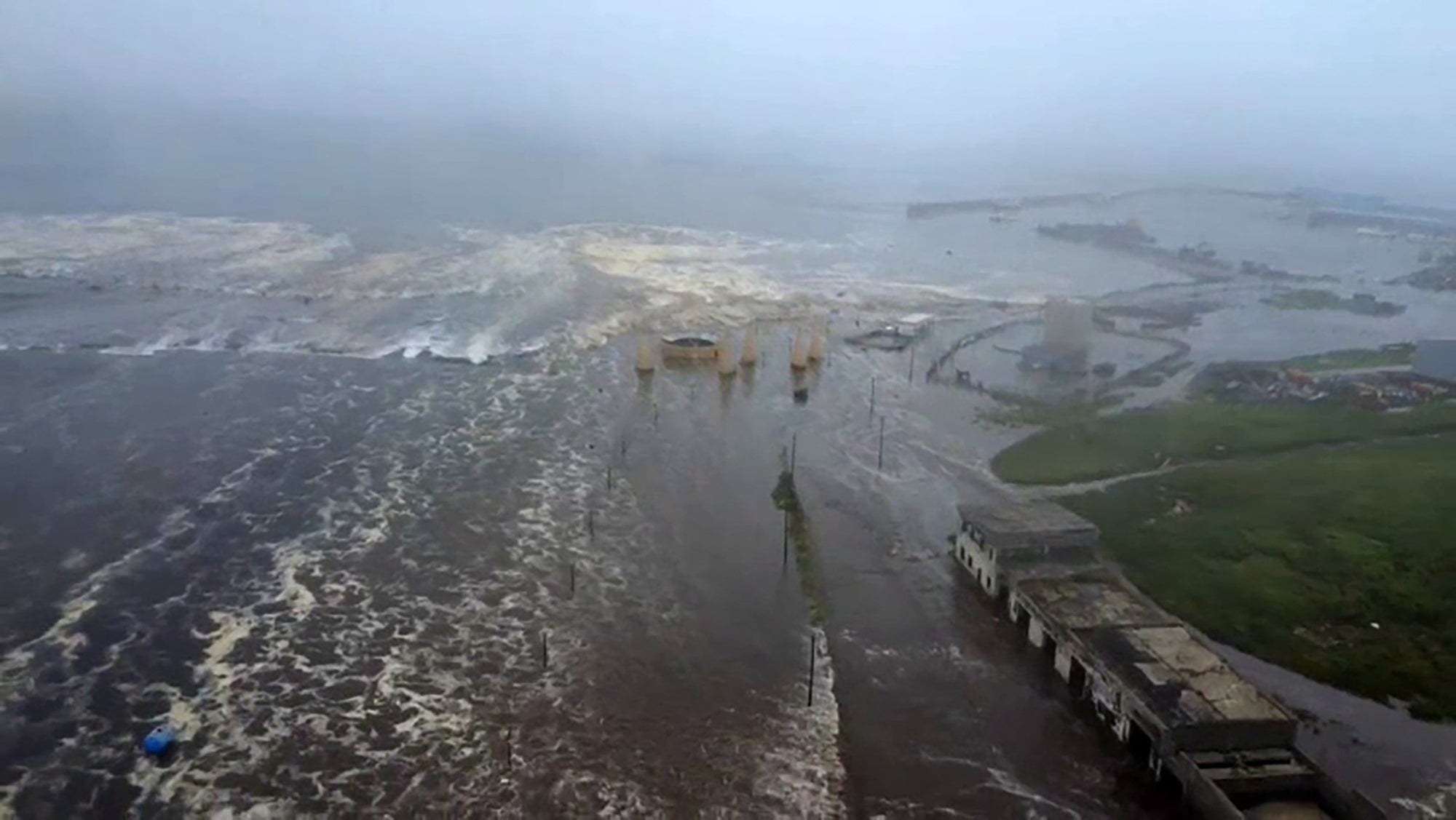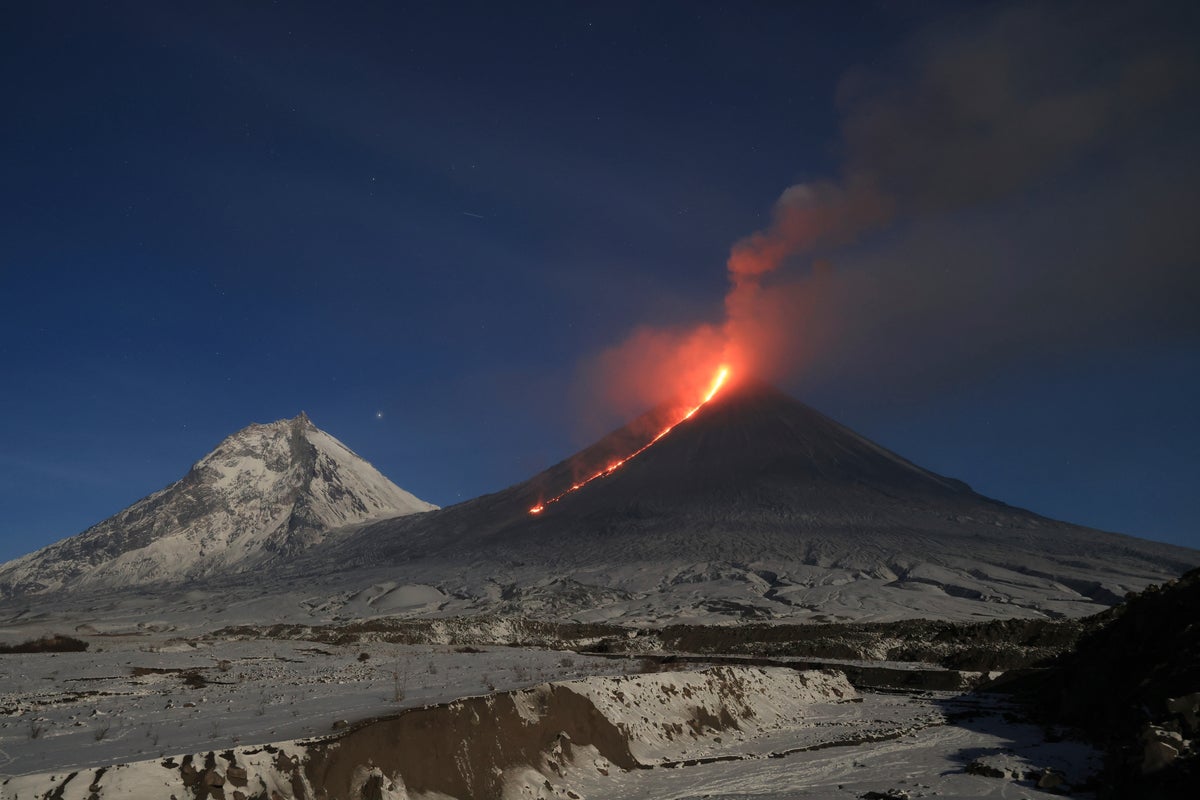Russia’s Klyuchevskoy volcano has erupted on the Kamchatka peninsula, following a powerful earthquake in the Pacific on Wednesday.
The Russian Academy of Sciences’ United Geophysical Service confirmed the eruption, stating on Telegram: “A descent of burning hot lava is observed on the western slope. Powerful glow above the volcano, explosions.”
Klyuchevskoy, one of the world’s highest volcanoes, is located approximately 450 km (280 miles) north of Petropavlovsk-Kamchatsky, the regional capital.
It has erupted several times in recent years.
Wednesday’s 8.8 magnitude quake off Kamchatka damaged buildings and injured several people in the remote Russian region, but no fatalities were reported.
The tsunami danger already appeared to be lessening in some places, with authorities downgrading their warnings in Hawaii, Japan and parts of Russia.
Residents fled inland as ports flooded on Kamchatka near the quake’s epicenter, while frothy, white waves washed up on the shore in northern Japan. Cars jammed streets and highways in Honolulu, with standstill traffic even in areas away from the sea.

People flocked to evacuation centers in affected areas of Japan, with memories fresh of the 2011 earthquake and tsunami that caused reactor meltdowns at a nuclear power plant. No abnormalities in operations at Japan’s nuclear plants were reported Wednesday.
A tsunami height of 3 to 4 meters (10 to 13 feet) was recorded in Kamchatka, 60 centimeters (2 feet) on Japan’s northern island of Hokkaido, while tsunami waves about 2 to 5 feet high reached San Francisco early Wednesday, officials said.
Much of the West Coast, spanning California, Oregon, Washington state, and the Canadian province of British Columbia, were under a tsunami advisory.
Hawaii was still under a tsunami advisory as Wednesday began, but evacuation orders on the Big Island and Oahu, the most populated island, had been lifted.
The impact of the tsunami could last for hours or perhaps more than a day, said Dave Snider, tsunami warning coordinator with the National Tsunami Warning Center in Alaska.”
A tsunami is not just one wave,” he said. “It’s a series of powerful waves over a long period of time. Tsunamis cross the ocean at hundreds of miles an hour — as fast as a jet airplane — in deep water. But when they get close to the shore, they slow down and start to pile up. And that’s where that inundation problem becomes a little bit more possible there.”


